Land Rover may make several appearances in this list, but plenty of other brands have an offering in this premium segment
Luxury SUVs have become a staple of premium car makers’ line-ups, with at least one from every major player, and each accounting for a healthy chunk of their manufacturers global profit margins.
These are cars in great demand, and rightly highly desired for their combination of versatility, comfort, refinement and performance both on- and off the road. Genuine 4×4 ability is common amongst them, as is the upmost in luxury, space and refinement. And amongst the many factors motivating buyers, stylish design and brand allure are becoming increasingly important. So who makes the best of ’em?
1. Range Rover Sport
An increasing number of ‘Range Rover’-branded derivates have turned what used to be one car into a family of Land Rover models, but the Range Rover Sport might be the most important car in that new family, as well as the most broadly talented and capable. It’s one of the most versatile upmarket SUVs on the market, and lives up to the word ‘luxury’ like few others.
It’s not quite as large or as spacious as its bigger sibling and isn’t the lightest car of its kind, but the Range Rover Sport more than makes up for it with its remarkable breadth of talent. That one car can offer such a complete catalogue of abilities is remarkable, and among them is outstanding offroad ability, and real on-road handling dynamism and driver appeal for car of this size. First-rate cabin richness, refinement and luxury ambience also come as standard, with Land Rover’s latest dual-screen infotainment system having been fitted to the car as part of it’s mid-life facelift.
The car’s roster of qualities is certainly one for which Land Rover charges a tidy premium, even over prices typical of this rarefied class. Meanwhile, the kerbweight necessary to provide the Range Rover Sport’s offroad ability also dulls its performance and fuel-efficiency compared with rivals, while rolling refinement can be adversely affected if you choose the biggest of Land Rover’s optional alloy wheels.
Even so, to drive one of these cars is to quickly realise that some prices are worth paying. The Range Rover Sport really does it all, and may well be all the luxury SUV you’ll ever want or need.
Save money with new Range Rover Sport deals from What Car?
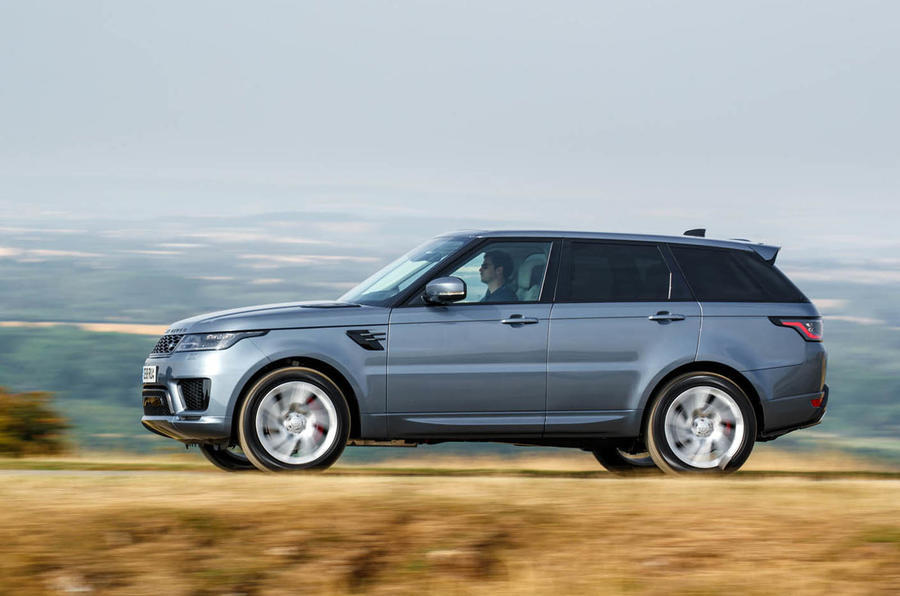
2. Land Rover Discovery
The second podium for Land Rover in the luxury SUV segment is delivered by a car whose character differs starkly from that of the car above, but may be all the more appealing to you for its relative lack of machismo: the fifth-generation Land Rover Discovery.
It’s a car of controversial but rugged styling, with off-road ability that few in the class could beat, and with a brief to provide functional, understated, comfortable luxury and versatility on the road – and that succeeds at that task with likable ease. Seven usable seats are inside, and when you’re driving you’ll have a great time because this is as comfortable a cruiser as many traditional, saloon-shaped luxury cars.
With such size and weight, though, comes considerable thirst, so the Discovery is not a cheap car to run. Nor is it fast, or particularly dynamic in its handling. In our view, however, a big 4×4 needn’t be, or do, much more than this in order to earn its place in your esteem and your affections – and the Discovery certainly does the latter.
Save money with new Land Rover Discovery deals from What Car?
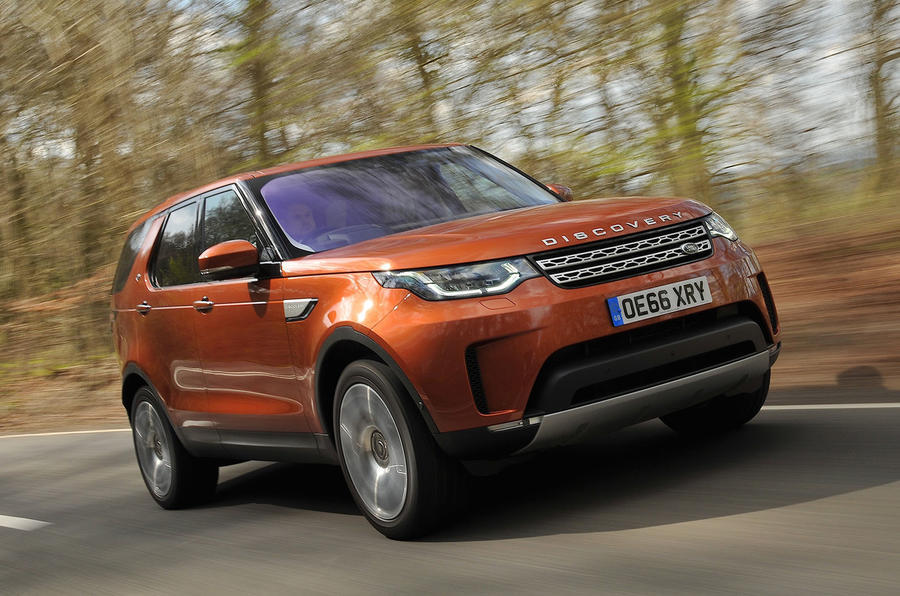
3. Porsche Cayenne
The car that saved Porsche entered its third model generation in 2018 and, in doing so, eased out its VW Group platform buddy, the Audi Q7, for a place at the sharp end of this class ranking.
The latest Cayenne isn’t quite the driver’s car we’ve all come to know, and that many of us came to begrudgingly respect after taking so powerfully against what the car seemed to represent in its first iteration back in 2002. Because Porsche is still Porsche; it still makes the very best sports cars in the world, thanks in no small part to a business that’s now built on the commercial bedrock of luxury SUVs.
The Cayenne in its current form is plainly a car that’s content to leave the sports car impressions to its little sibling the Macan, and instead to play the high-quality, luxury SUV with greater focus than any of its forebears have. It still delivering driver appeal that’s distinguishing, if not quite outstanding.
The Cayenne’s interior is one of breath-taking quality, its ride refinement gives away almost nothing to the most comfortable in the class, and its performance is as strong as ever, backed by a range of engines that may no longer include a diesel, but that does include an impressive band of plug-in hybrid, turbo V6 and turbo V8 petrols.
Save money with new Porsche Cayenne deals from What Car?
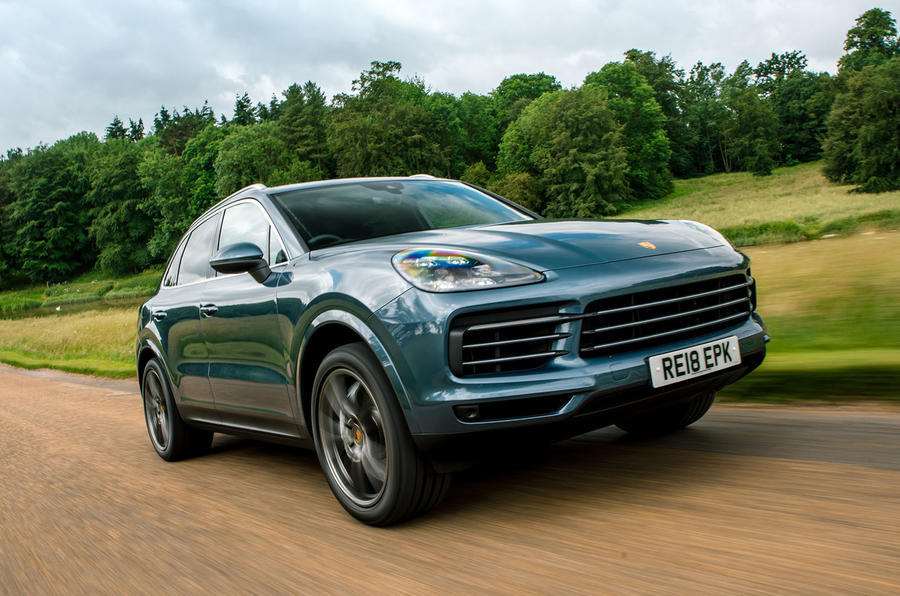
4. Audi Q7
The Q7 is desirable, polished SUV with a real aura of accomplishment. Huge inside, with high-quality materials and a very high level of refinement and mechanical isolation, it may be the embodiment of everything you want in a modern upmarket family car – particularly if you consider cars like this the modern embodiment of luxury in automotive form.
The downsides? In typical Audi fashion, the Q7 feels quite remote to drive, handles in grippy and effective but uninvolving fashion, and is a little short on the charisma that other cars in this class have in abundance.
It’s potent and efficient, though, and improves over the previous model‘s standards in every way. With pricing that’s quite competitive and on-road performance free of many of the usual SUV compromises, it’s little wonder that the big Audi remains so popular.
Save money with new Audi Q7 deals from What Car?
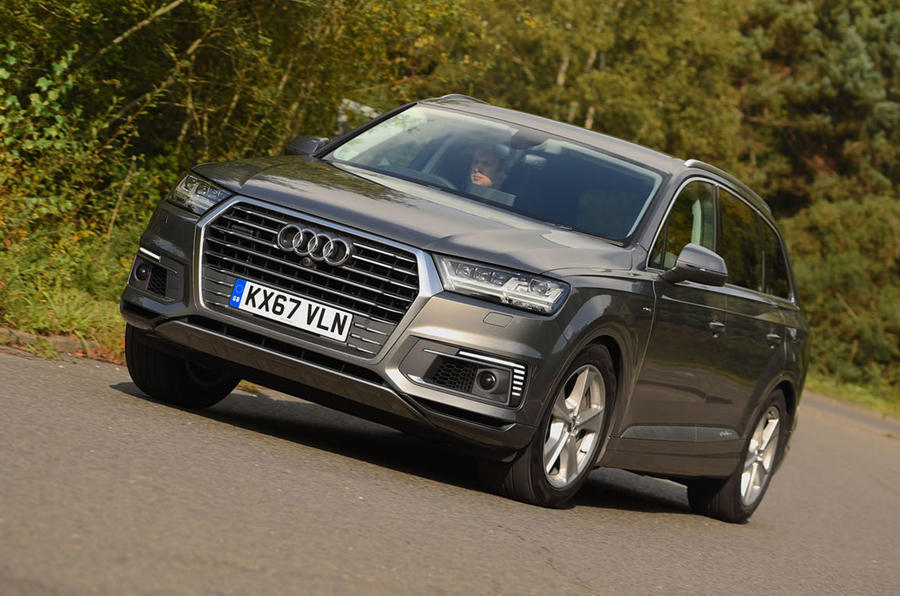
5. BMW X5
The fourth-generation of Munich’s full-sized luxury 4×4 signals a maturing and broadening of the X5’s character definition, but not a wholesale change of it.
Twenty years ago, when BMW revolutionised and revitalised this part of the luxury car market with the original X5, it hit on a powerfully appealing concept: that of the sporting SUV with as much space, versatility and 4×4 capability as many needed – but not enough to dull its dynamic edge.
Today, the ‘G05’-generation X5 still represents that notional positioning. It’s smaller and lower than many of its rivals, with a more saloon-like recumbent driving position. It has a richer and more expensively finished cabin than its predecessor, so gives away little on luxury ambience – and has a sizeable boot.
But it’s the X5’s driving experience that’s still most likely to bond you with the car, particular if a large 4×4 is the car you need but not the one you necessarily want. Pacey steering, good body control, well-balanced grip levels and fairly crisp and incisive handling response make this handle as much like a family estate car as an SUV, while strong, smooth and refined engines provide all the performance you’re likely to want.
Other SUVs offer more material richness still, as well as more space, comfort and 4×4 capability; and that’s to say nothing of the X5’s styling which, thanks to that oversized kidney grille, has attracted some high-profile criticism. Still, for keen drivers, the X5 will always deserve close consideration.
Save money with new BMW X5 deals from What Car?
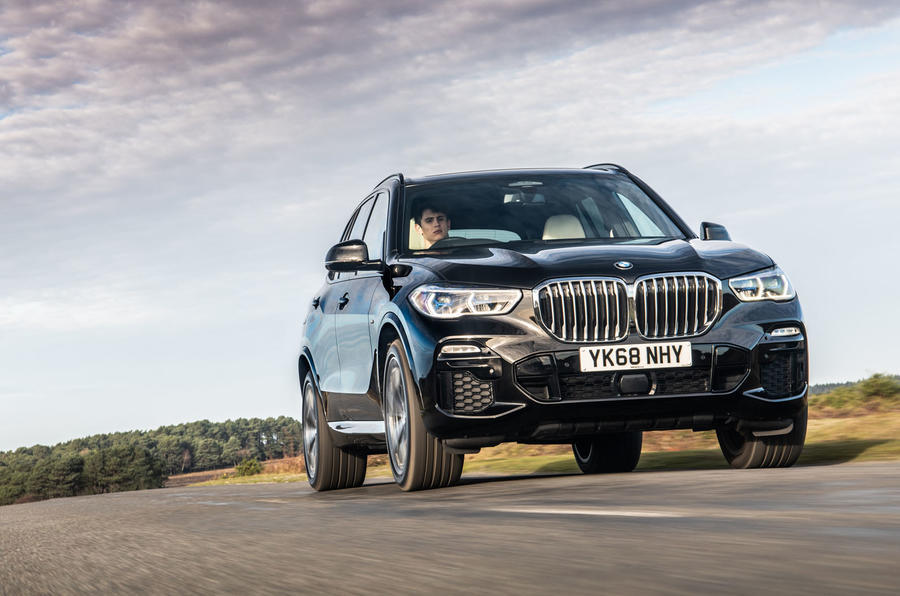
6. Mercedes-Benz GLE
Mercedes has redoubled its commitment to the luxury SUV market by investing in a new vehicle platform, and by making the first model to use it – the fourth-generation GLE (predecessors of which used to be known as the ML-Class) – a bit of a technological pioneer.
Having grown in size considerably compared with the old GLE, the new one has a more rigid mixed-metal body structure, too. It offers considerably more space for second- and third-row passengers than its predecessor, and what Mercedes bills as a markedly more upmarket luxury ambience in all seats – although our testers report that the effect on this front is more evolutionary than revolutionary. The car uses Mercedes’ latest MBUX infotainment system and dual widescreen instrument and Comand controls displays, but also gets a giant-sized head-up display with improved display functionality.
Engine options include a trio of four- and six-cylinder turbo diesels with up to 325bhp, as well as a 3.0-litre turbocharged petrol which, in the GLE 450, makes 362bhp and 369lb ft in the current range-topping option. For suspension, meanwhile, you can choose between steel coil suspension and a 48-volt active air suspension system that uses stereo cameras to read the road surface ahead and prepares the suspension for what it’s about to encounter in advance.
So far we’ve driven a GLE 450 on the continent (which impressed us greatly with its refinement, performance and ride comfort) and a GLE 300d in the UK (which was notably shorter on mechanical isolation and ride sophistication, but also didn’t have a fully representative UK-market specification).
There is clearly more reporting to do on the GLE, then – and its ranking here may yet be subject to improvement. For now, suffice it to say that – in the right mechanical specification – it could well deserve a rank on your shopping list.
Save money with new Mercedes GLE deals from What Car?
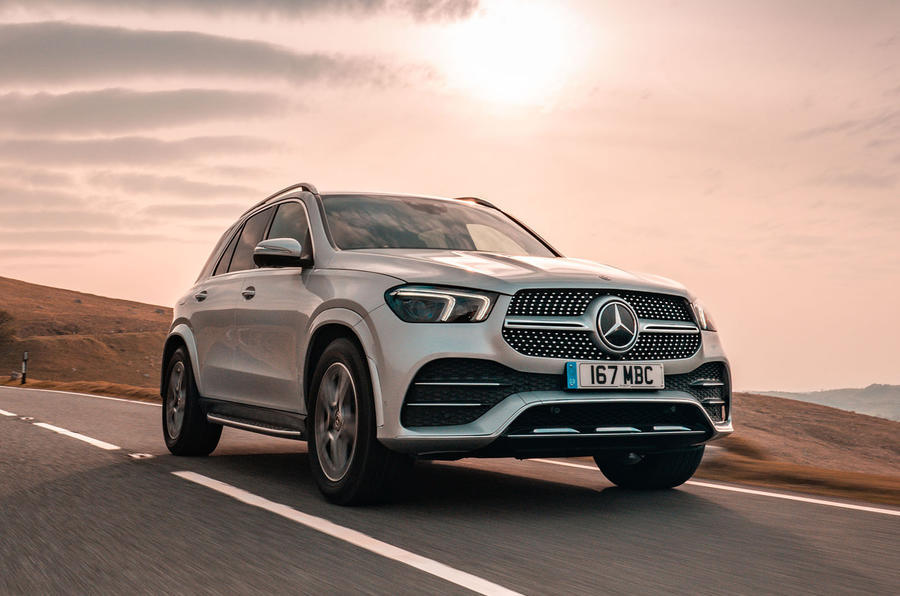
7. Volvo XC90
Volvo’s renaissance following Ford ownership started with the XC90 – a genuine seven-seater with comfort and handling on its side, a decent range of engines including a 401bhp plug-in hybrid, as well as an abundance of style.
It’s another car that sits directly in the middle of the luxury SUV price spectrum. The interior features a mix of luxury touches and not-so-luxury plastics in places, while less-than-perfect engine refinement and infotainment usability niggles ensure the XC90 stops just short of greatness.
But a spot in the heart of a hotly contested, marquee class like this won’t disappoint a company still in the early days of its latest ownership epoch. Volvo is a company on the up, and the XC90 is a refreshing, interesting car from the same mould.
Save money with new Volvo XC90 deals from What Car?
8. Range Rover Velar
The Range Rover Velar is Land Rover’s most road-biased SUV yet, with looks taken straight from those of the concept car, an interior that puts most others to shame with its richness in both materials and technology, and a model platform adapted from one primarily developed for its group partner brand Jaguar.
On the road it’s every bit as good to drive as it is to simply admire, with ride, refinement, performance and handling precision every bit as good as any car in the class – provided you don’t skimp on cylinder count when you specify your car (the four-cylinder engines being much poorer than the sixes).
Practicality and offroad ability aren’t quite up to the standards of Land Rover’s other cars in this class, but the latter is boosted considerably if you option height-adjustable air suspension.
Prices start fairly low but it’s worth stretching to the better engines in the range, albeit perhaps not Range Rover’s upper-echelon trim levels, to get the best car. At its worst, the Velar can be a fairly ordinary car to drive: but at its best, it’s quite something.
Save money with new Range Rover Velar deals from What Car?

9. Mercedes-Benz G-Class
Mercedes’ top-of-the-line SUV, the reimagined G-Class, is a pricey purchase even judged among the not-inexpensive company amongst which it’s mixing here. And yet for its boxily enigmatic design appeal, its uncompromising offroad ability and its new and improved credentials as a luxury conveyance, you could easily decide that a near-£100,000 sum would be worth paying.
Few SUVs have as much naked Tonka toy kerbside allure as this one. Mercedes’ latest update for the car kept true to the car’s set-square aesthetic, and stirred in some wonderful design details; but totally overhauled the car’s chassis, suspension and interior – to the point where existing G-Wagen owners would recognise the handling manners, refinement and quality fittings of the new one.
G-Class buyers can choose between the refined and fairly economical the G350d diesel option and the madcap 577bhp –AMG G63 – the latter having more power and performance than this sort of dual-purpose offroader could ever use on the tarmac, but feeling gloriously absurd for it.
Stick to the diesel, mind you, and you’ll find ride comfort is very creditable; that on-road handling is pretty tidy, but for a slight unwieldiness when manoeuvring associated with a limited turning circle; and that space and usability is competitive too, if you can live with a large side-opening tailgate with a boxy spare wheel attached that can be hard to open in tighter spaces, and a smaller boot than some rivals.
Save money with new Mercedes G-Class deals from What Car?
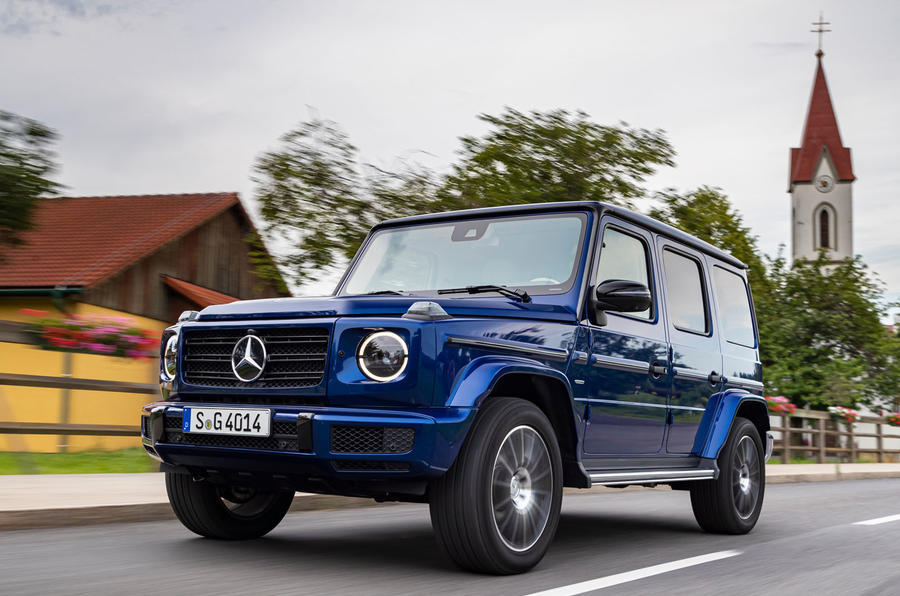
10. Volkswagen Touareg
Volkswagen’s modern flagship SUV is a car that perfectly illustrates what its maker does so well; but also what – even after decades of trying to make really convincing luxury cars – still eludes it.
The Touareg has all of the refinement, quality, capability and technological sophistication you could want from a big modern 4×4. It lacks the stylishness, the richness or the luxury aura, however, that may be necessary to tempt people out of its rivals, and generally fails to compensate for the headstart enjoyed by rivals from more desirable premium brands than Volkswagen. Progressive design has characterised VW’s cars for decades, after all, keeping its more affordable offerings so classless, functional and easy-to-use. But when the philosophy is applied to a £50,000 SUV, it results in a car that’s strangely short on design identity and – besides a chromed grille of close-to epic proportions – presents buyers with very little to simply lust after.
The VW has a roomy and well-finished interior with some very impressive digital technology integrated within it. Performance is strong if a little unresponsive at times. Ride and handling is very respectable but nothing special.
Save money with new Volkswagen Touareg deals from What Car?
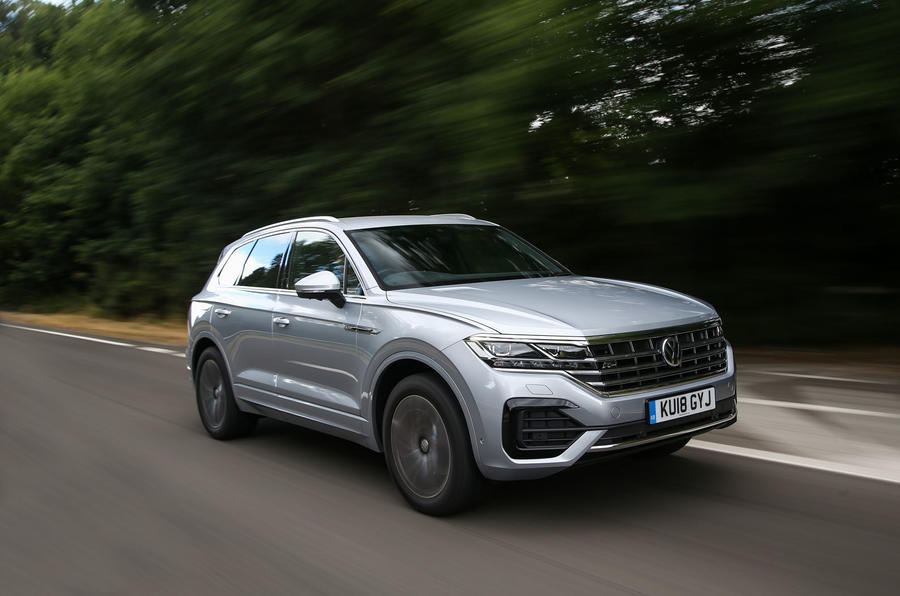
Source: Autocar

